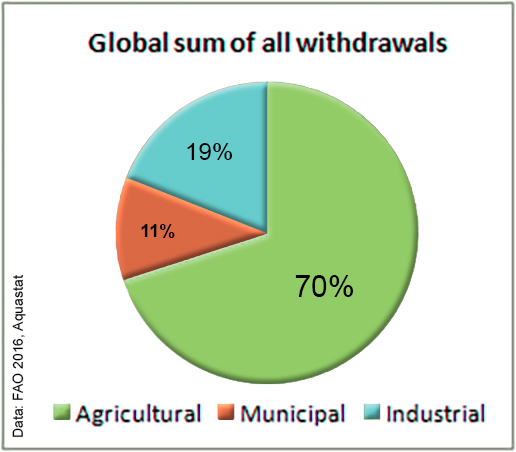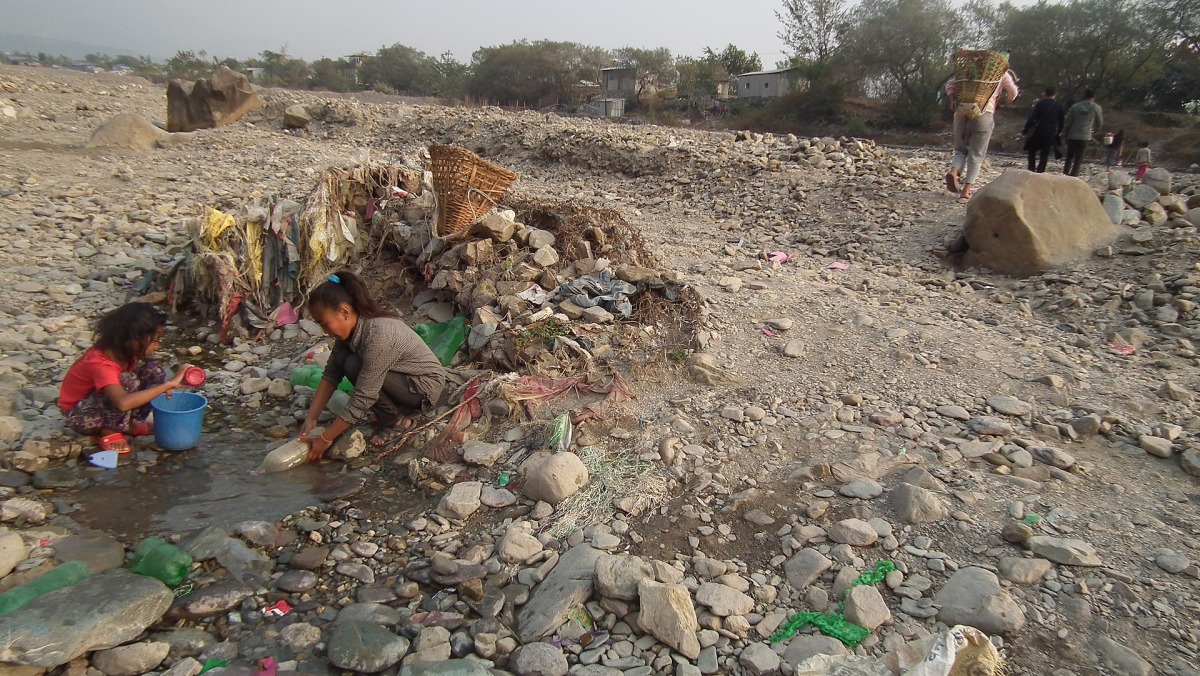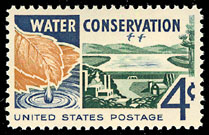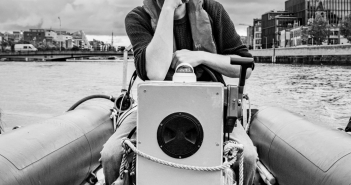La Soif Du Monde (‘A Thirsty World’) and ‘The Fight for Water: A Farm Worker Struggle’ were two 2012 documentaries based on true stories, anticipating further struggles for water, or lack thereof.
Environmentalist Erik Stokstad once remarked that ‘H2O – is there any other molecule so vital, and so problematic, for people?
The UN estimates that around 1.2 billion people, or 20 per cent of the world’s population, live in areas where the limits of sustainable water use have already either been reached, or breached. It is high time the issue sits as a priority on the global agenda. There may still be enough for us all, if only we can keep it clean and share it.

WHO Report
Below are a few takeaways from a World Health Organization report on the global water scenario:
- In 2017, 5.3 billion people used a safely managed drinking-water service (i.e., one located on-premises and free from contamination)
- 6.8 billion people used at least a basic service. Basic service is an improved drinking-water source, within a round trip of 30 minutes, to collect water.
- 785 million people lack even a basic drinking-water service, including 144 million people who are dependent on surface water.
- About 2 billion people use a drinking water source contaminated with faeces.
- Contaminated water can transmit diseases such as diarrhea, cholera, dysentery, typhoid, and polio. Contaminated drinking water is estimated to cause 485 000 diarrheal deaths each year.
- By 2025, half of the world’s population will be living in water-stressed areas.
- In the least developed countries, 22% of health care facilities have no water service, 21% no sanitation service, and 22% no waste management service.
Water use has been increasing globally by about 1% every year since the 1980s. This is due to population growth, socio-economic development and changing consumption patterns. Global water demand is set to rise at a similar pace until 2050, accounting for an increase of 20-30% above the current level of use with increased demand from both industrial and domestic sectors.
About two billion people live in countries experiencing high water stress, and four billion people experience severe water scarcity for at least a month every year.
Water stress is defined as the ratio between water withdrawals (i.e., domestic, agricultural, and industrial water uses) and available renewable water supplies.
Water scarcity means scarce availability (i.e., physical shortage) due to the failure of institutions to ensure a regular supply or due to a lack of adequate infrastructure. Safe drinking water and sanitation are basic human rights, indispensable to sustaining healthy livelihoods and fundamental to maintaining the dignity of all human beings.
International Human Rights law obliges states to work towards achieving universal access to water and sanitation for all, without discrimination, while prioritizing those most in need. Fulfilment requires that services be safely available, physically accessible, equitably affordable. Water availability depends upon the amount of water physically available, and also how it is stored, managed and allocated to various users.
It, therefore, relates to surface water and groundwater management, alongside water recycling and reuse. Water management for smallholder family farmers needs to consider both rainfed and irrigated agriculture. Approximately 80% of global cropland is rainfed, and 60% of the world’s food is produced on rainfed land.
The 2019 UN-Water initiative called ‘Leaving No One Behind’ suggested how improvements in water resources management and access to water supply and sanitation services are essential to addressing various social and economic inequities. Water scarcity is entwined with environmental protection, poverty alleviation and promoting development; globally more than 2.5 billion people live in the most abysmal standards of hygiene and sanitation.
Wastage of water and absence of regular clean water supply is evident not only in burgeoning metropolises but also in huge rural regions. The mighty Colorado river, North America, seldom meets the sea. One-third of the US and one-fifth of Spain still suffer from water stress. Central Africa’s Lake Chad, supporting thirty million-plus people has already shrunk to one-tenth of its former size, the negative contributory factors include inter alia climate change, drought, poor management and overuse.

South Asian woman carrying water on her head, 2016.
India
In India accessibility to drinking water has increased considerably over the last decade in particular. However, around 10 per cent of the rural and urban populations still don’t have access to regular safe drinking water.
The available annual utilizable water in the country (surface as well as ground) stands at 1100b cubic meters.
World Bank data shows that the total cost of environmental damage in India amounts to 4.5 per cent of GDP and of this 59 per cent results from the health impact of water pollution!
Another cause of anxiety is that unsatisfactory availability of safe drinking water. Though water contains organic and inorganic impurities, the main source of diseases are the organic impurities that enter into the water through the soil from cesspools, through manure, or through sewers emptying their contents into the rivers – from which many cities, in particular, get their drinking water supply.
Additionally, inadequate home piping systems including unclean water tanks, improper drainage, and waste disposal systems, also contribute to impure or contaminated water. Again, the presence of excessive inorganic matters (iron, lead salts, etc.) leads to diseases like constipation, dyspepsia, colic, paralysis, and kidney disease, sometimes resulting in death. Dangerous bacteria produce deadly diseases of jaundice, cholera, typhoid, diphtheria, kidney problems, nervous system problems and even lead to an increased risk of cancer.
Contrary to popular perception, the hardness of water is not a risk to health so long it does not contain disease-causing pathogens and bacteria. Especially, during summer and rainy seasons, the position goes from bad to worse, as water-borne diseases become rampant. The extreme heat and humid environments are favourable to bacteria. The immediate need is thus to invest in timely, reliable, proven and advanced water purification systems[xiv] that guarantees the public safe and pure drinking water at all times.
Efforts to enhance drinking water supply must move at a greater speed so as to cover all of the villages in the developing bloc with adequate potable water connection and supply.
Technology plays a vital role in terms of meeting people’s basic needs in a sustained manner. Naturally, protecting freshwater reserves, watershed development, chemical treatments following the safety norms, tackling the arsenic and fluoride contamination, among others, could offer rich dividends.

Strategies for Managing Water
The former Secretary-General of the United Nations Ban Ki-moon once said:
we need to begin thinking about better strategies for managing water – for using it efficiently and sharing it fairly. This means partnerships involving not just governments but civil society groups, individuals and businesses.
This is a realistic approach, which is not achieved by hiding in conference rooms and observing world water day.
Responsibility lies with both government and the private sector, and involves: checking the unrestricted exploitation of groundwater; encouraging planned urbanization; optimisation of use; restricting the flow of effluents from industrial units to the rivers, with stricter governance.
We must nurture new scientific knowledge in order to understand the evolution of water systems that involve the relationship between man and nature. But also integrate local knowledge into scientific research to address user needs, and put in place more effective mechanisms to translate scientific knowledge into societal action.
The challenges of addressing the water-food-climate-change-nexus could be mitigated if collaborative approaches are taken up, which depend on political will, market mechanisms and innovative technology.
For example, market forces could work well under a cap-and-trade approach similar to those applied to carbon dioxide. Creating mechanisms for market forces to play a role in the management of scarce water could be a major leap forward.
Developing an inclusive institutional structure to establish multi-stakeholder dialogue and cooperation is essential to ensuring equitable access to sustainable water supply and sanitation services.
When governments’ roles are geared towards policy setting and regulation, the actual provision of services is carried out by non-state actors or independent departments. Well-functioning accountability mechanisms help institutions with sufficient capacity fulfil their mandates to monitor and enforce the obligations of the service providers.[xvi]

Girls of squatter settlement in Dharan collect water from river.
Towards a Sustainable and Efficient Water Resource Strategy
Every year, several millions of people die from drinking contaminated water. To help address these challenges related to freshwater, scientists in many disciplines are applying new tools and techniques. One way has been to understand the impact of climate change on water quantity and quality and predict future needs and threats. Another way has been to explore making use of water—for drinking or industrial purposes—from sources that are otherwise considered unusable.
An emerging area is the ecological impact of activities related to the energy industry such as fracking or carbon sequestration. Other researchers are trying to increase the efficiency of farms and factories – the biggest consumers. Water scarcity already poses a great threat to economic growth, human rights and national security.

Deforestation of the Madagascar Highland Plateau has led to extensive siltation and unstable flows.
A Global Phenomenon requiring Local action – a ‘Glocal’ focus for the road ahead!
Water recycling and finding better ways to remove salt from seawater could be of key importance. Population growth could cause global demand for water to outpace supply by mid-century if current levels of consumption continue, according to a recent study.
Periods of increased demand for water – often coinciding with population growth or other major demographic and social changes – were followed by periods of rapid innovation of new water technologies that helped end or ease any shortages.
Using a delayed-feedback mathematical model that analyses historic data to help project future trends, some studies have identified a regularly recurring pattern of global water use in recent centuries. Based on this recurring pattern, researchers from Duke University predict a similar period of innovation could occur in the coming decades.
There is thus an immediate need to invest in a reliable, proven and advanced water purification system that guarantees the public – in both rural and urban areas – safe and pure drinking water at all times.
State of the art technology must be extensively made use of in a time-bound manner to protect the triple bottom (planet, people, profit)[i] from threats emanating from various forms of pollution.

PROACTIVE over REACTIVE use of water technologies
It is worth noting that companies are proactively taking initiatives and are stepping up steadily. One company called Ecolab intends to further leverage lot and machine learning to enhance its proactive services to ensure water is conserved and available to both businesses and the communities they operate in.
They have provided their service to about 40,000 customers in more than 170 countries around the world to maximize available resources. There is a positive impact on process efficiency too.
Hopefully, the next-generation 3D TRASAR technology reduces reuses and recycles water. The technology can not only monitor the water usage at a customer’s site and alert us should it get out of control, but it can also take remedial actions based on the stress levels on the systems, and induce chemicals or reduce water usage to maximize the life of the asset and minimize usage.

People collect clean drinking water from a tapstand in the town of Ghari Kharo, in western Sindh Province in Pakistan.
Population Growth
Population growth puts strain on the per capita availability of water. In the developing world, efforts to enhance drinking water supply must move at a greater speed so as to cover all of the villages with adequate potable water connection/supply.
New technology should play a bigger role in such a context to meet people’s basic needs in a sustainable manner. Naturally, protecting freshwater reserves, watershed development, chemical treatments following the safety norms, tackling the arsenic and fluoride contamination, among others, could also offer rich dividends for private companies.
Water limits are close to being breached in several countries, while food output has to increase by up to 100 per cent by 2050 to sustain a growing world population, according to the United Nations.
We must holistically manage water and energy usage. Further efforts must be intensified to maximize the use of technology in order to proactively conserve water and improve performance in water-intensive industries.
A progressive, realistic plan should therefore focus on:
(A) improving data collection on the location and types of water resources.
(B) promoting water-saving farming technologies.
(C) developing sewage treatment facilities alongside water projects.
(D) establishing a national monitoring body and a new legal framework for the sector.
As we can’t expand in a quantitative sense, we have to expand by using our water more carefully.
Feature Image: Abandoned ship near Aral, Kazakhstan.




